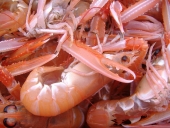posted 5 years ago
First, I have never made my own file. In fact I don't normally use it in my Gumbo. Traditional cajun kitchens put a jar on the table to allow each to add their own to their preference. I like a broth type roux for my gumbo so quit using it myself. Instead, I use the whole leaf as a seasoning while simmering and fusing the flavor to the roux. (Please remove the whole leaf, as is is not good to eat; or so I am told.) As far as other recipes, I use whole leaves in a lot of other stocks where I need an earthy undertone. Also it is a key ingredient in seafood prep. (boiled crab, shrimp, crawfish, etc...), even spaghetti sauce.
I can't remember or source where I know this from; but as I recall the best file is fresh made from late spring leaves, dried and ground, stored in sealed mason jars. I think it has to do with the ratio of sap to fiber in the new growth; but I am stretching here. I don't think most of us could tell the difference between file made from one leaf or another. Some old timers might; or people with very sophisticated palettes. Experiment. The journey is the reward. My suggestion would be leaves that are one to two months old from budding time. Air dry, meaning room temp, exposed to air circulation but not direct sunlight. Shake, stir or fluff daily to prevent any moisture issues or mold. when brittle grind into a fine powder.
Yes, the leaves are reported to be medicinal in poultice. This from Native American remedies, as a pain and inflammation treatment.
Don't be afraid to try a gumbo or roux! It is actually very easy and no different from you grandmother's flour gravy. It just is cooked longer and to a higher temp. I had to teach myself how to make a roux and was intimidated at first at the mystery surrounding it. It really was not that difficult. Just keep the paste moving and don't let it stick to the pan. For your first try start with your stove on a medium heat, so it does not 'get away from you', as you practice. It takes longer but will yield success with less fuss. As you get more accustom to the way it progresses, you can add more heat to cut the cook time. Also, many 'new cooks' are advocating doing a 'dry roux' which is just toasting the flour in the oven, so there is no stirring. However, that technique takes a long time, but is fairly fool proof. I have not tried it myself.




